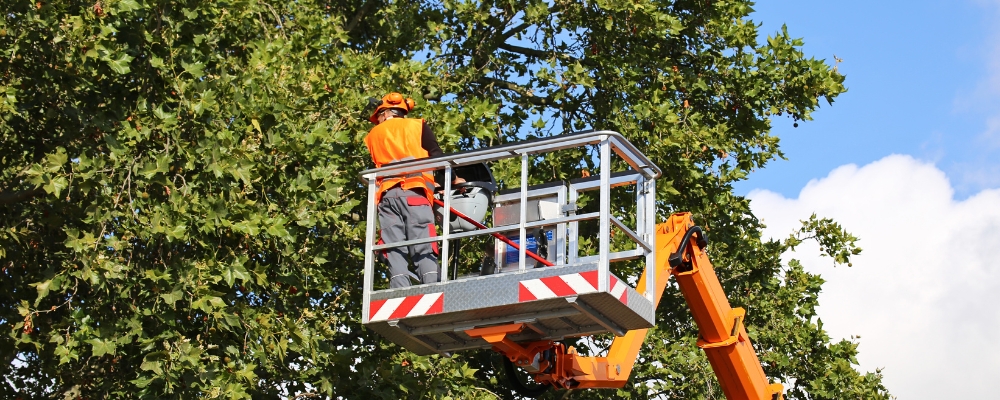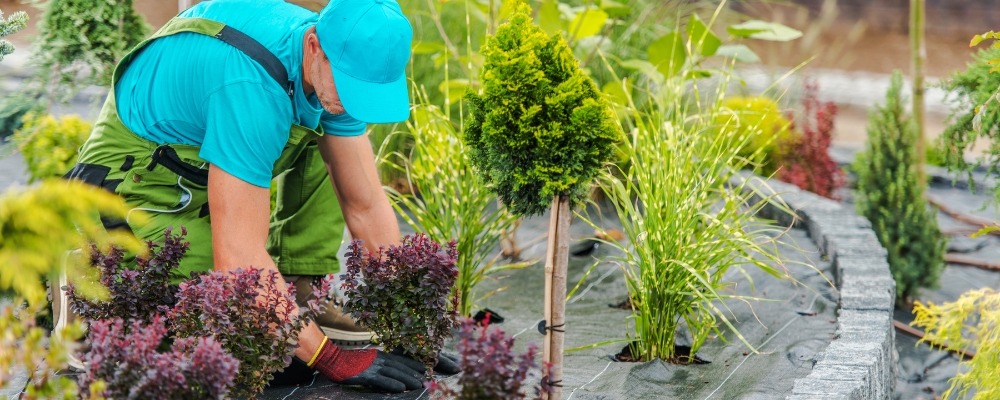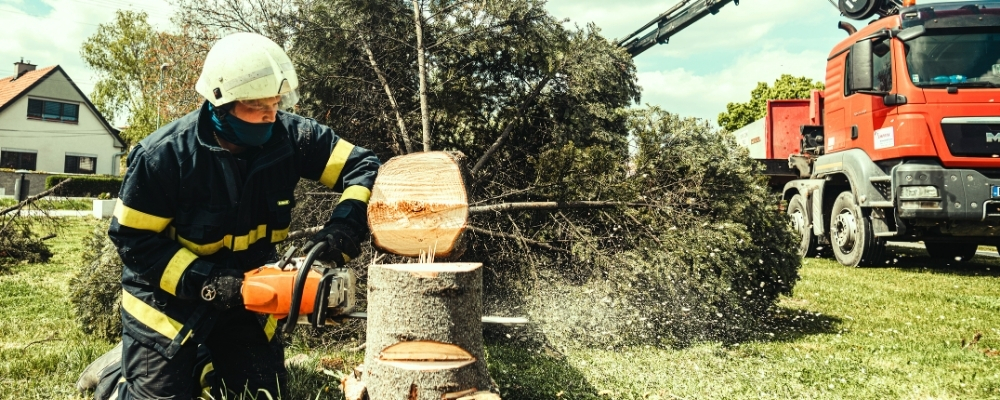Anaheim’s urban forest enhances neighborhoods throughout Orange County, with thousands of trees providing shade, beauty, and environmental benefits. Properly maintained trees can increase property values by 10-20% and provide substantial energy savings, while neglected trees pose risks from falling limbs during Santa Ana winds to root damage affecting foundations. Investment in your trees is investment in safety, property value, and environmental quality.
Tree maintenance can be an intimidating prospect, and dealing with issues like disease and overgrowth is completely outside of most people’s comfort zones. That’s where quality tree service professionals in Anaheim bring expertise beyond basic trimming. Professional arborists understand local regulations, maintain proper licensing and insurance, and prioritize both immediate needs and long-term tree health. If you’re on the hunt for help with your leafy friends, you’ve come to the right place.
Essential Tree Services for Anaheim Properties
Tree Trimming and Pruning
Timing is crucial for tree trimming in Southern California. Late winter through early spring (January-March) is ideal for most species, while jacarandas and flowering fruit trees should be pruned immediately after blooming. Health pruning removes dead, diseased, or damaged branches and improves air circulation, while aesthetic pruning shapes trees to complement landscape design. All pruning should respect natural growth patterns and never remove more than 25-30% of the canopy in a single season.
Safety clearance requirements are non-negotiable. Southern California Edison requires 4-10 feet clearance from power lines, and branches overhanging roofs should maintain 6-10 feet clearance to prevent debris accumulation and pest access.
Tree Removal and Stump Grinding
Tree removal becomes necessary when trees are dead, dying, structurally compromised, or poorly located too close to foundations or utilities. Anaheim’s Tree Preservation Ordinance requires permits for removing protected species, with significant fines for unauthorized removal. Property owners should consult with their tree service provider to determine permit requirements and assist with applications.
Professional arborists use controlled dismantling methods and specialized rigging equipment for safe removal. Trees are removed systematically from top to bottom, with sections carefully lowered to prevent property damage. After removal, stump grinding eliminates tripping hazards and prevents pest infestations, reducing stumps to 6-12 inches below grade for lawn restoration or replanting.
Specialized Tree Care Services
Tree Health Assessment and Disease Management
Orange County’s climate presents specific challenges including anthracnose, powdery mildew, and root rot diseases. The Polyphagous Shot Hole Borer represents one of the most serious current threats to urban forests. Professional treatment options range from systemic insecticides to biological controls using beneficial insects. Integrated Pest Management (IPM) approaches prioritize the least toxic methods while maintaining effectiveness.
Southern California’s alkaline soils can lock up nutrients, causing chlorosis in many species. Professional soil testing reveals pH imbalances and deficiencies, allowing arborists to recommend targeted amendments like sulfur to lower pH or chelated iron for chlorosis. Deep root fertilization delivers nutrients directly to the root zone, promoting vigorous growth and disease resistance.
Emergency Tree Services
Santa Ana winds can exceed 60 mph, and winter storms saturate soil and destabilize trees. Emergency services address immediate hazards; removing fallen trees from structures, clearing access, and securing partially failed trees. Regular inspections identify weak branch unions and structural defects before storms strike, allowing preventive measures like cabling or bracing.
Professional companies experienced with insurance work provide detailed documentation with photographs and reports, helping property owners navigate claims. Most homeowner policies cover tree removal when trees damage covered structures, and working with experienced providers ensures faster settlements.
Choosing the Right Tree Service Provider
Credentials and Certifications to Look For
ISA Certified Arborists represent the gold standard, having passed comprehensive examinations and maintaining ongoing education. California requires contractors licenses (C-61/D-49) for projects exceeding $500. Verify licenses through the California Contractors State License Board. Comprehensive insurance coverage (general liability and workers’ compensation) protects your property and shields you from liability. TCIA accreditation indicates companies meet rigorous safety and ethical standards.
What Sets GrowScapes Apart
GrowScapes provides complete tree care solutions including health assessments, pest and disease management, emergency response, and long-term maintenance planning. Rather than limiting services to basic trimming and removal, their team understands Orange County’s specific climate challenges, soil conditions, and common tree species, ensuring recommendations tailored to your property’s unique conditions. This local expertise makes a significant difference in achieving optimal results.
GrowScapes follows current arboricultural standards that promote long-term tree vitality, never using harmful practices like topping that seriously damage tree health and structure. They prioritize Integrated Pest Management approaches that minimize chemical inputs while effectively controlling problems, and wood waste from removals is recycled into mulch rather than filling landfills. These sustainable practices reflect both environmental responsibility and understanding that healthy trees require proper care, not just cosmetic fixes.
Customer testimonials consistently mention responsive communication, arriving on schedule, thorough cleanup that leaves properties looking better than before, and results exceeding expectations. The project portfolio demonstrates capability across diverse situations, from delicate pruning of heritage oaks to complex removals in tight urban settings with limited access.
Professional arborist consultations from GrowScapes assess entire properties, identifying both immediate concerns and potential future issues that could become problems down the road. They explain findings in understandable terms, discuss options with pros and cons, and develop recommendations aligned with your goals and budget. This consultative approach means you’re making informed decisions based on expert analysis rather than guessing at what your trees need.
Tree Care Planning and Maintenance
Seasonal Maintenance Schedules
Spring (March-May) is ideal for structural pruning, fertilization, and planting new trees. Summer (June-August) focuses on water management and pest monitoring. Fall (September-November) brings winter preparation; inspecting trees for storm risks and planting deciduous species. Winter (December-February) is excellent for major pruning and addressing disease issues.
Long-term planning considers trajectories extending decades ahead. Young trees benefit from structural pruning establishing strong architecture, while mature trees need monitoring for decline symptoms. Annual maintenance costs $200-400 but prevents $5,000-15,000 emergency expenses from failed trees and property damage.
Landscape Integration and Design
Selecting appropriate species requires balancing aesthetics and suitability. Native and drought-adapted species like coast live oak and California sycamore thrive with minimal irrigation. Flowering trees such as jacaranda and crape myrtle provide seasonal interest. Consider mature size carefully– fast-growing species may outgrow available space within a decade.
Trees should be planted 10-15 feet from structures, with consideration for utility locations. Coordinating tree care with landscape design creates cohesive outdoor spaces where trees provide structural framework.
Cost Factors and Investment Value
Tree Service Pricing
Service costs depend on tree size, location, and complexity. Larger trees require specialized equipment and increased safety measures. Trees near structures or with limited access add complexity. Get on-site evaluations for accurate written estimates and avoid phone quotes without property inspection.
Preventive maintenance costs significantly less than emergencies. Regular pruning might cost $300-500 annually but prevents $5,000-15,000 expenses from failed trees and property damage. Disease treatment caught early might cost $400-800, while replacing a dead tree could exceed $3,000-5,000.
The Rewards of Professional Tree Care
Studies show mature trees add 7-19% to property values. Well-maintained landscapes with healthy trees sell faster and command premium prices. Trees shading west and south-facing walls reduce cooling costs by 15-35% during Anaheim’s hot summers. Over a tree’s lifetime, these energy savings can amount to thousands of dollars.
Regular professional inspections create documentation of responsible stewardship while addressing problems before they cause injury or property damage. Property owners can be held liable for damage caused by trees they knew or should have known were hazardous.
Set Your Trees Up For Success
Anaheim property owners face unique considerations managing their urban forest. Understanding essential services, from routine pruning to emergency response, helps you make informed decisions about your property’s needs.
Partnering with experienced professionals like GrowScapes ensures your trees receive expert care tailored to local conditions. Their comprehensive services, commitment to sustainable practices, and consultative approach create lasting value beyond simple maintenance.
Frequently Asked Questions
How often should I water my trees during Anaheim’s drought conditions?
Watering frequency depends on tree age, species, and soil type, but established trees typically need deep watering every 2-4 weeks during summer drought periods. The key is watering deeply rather than frequently, soaking the soil 12-18 inches deep encourages good root growth that improves drought tolerance. Young trees (under 3 years) need more frequent watering, ideally weekly during hot months, while native and drought-adapted species need significantly less water once established.
What should I do if my tree’s roots are lifting my sidewalk or driveway?
Root damage to hardscaping requires careful assessment before taking action, as cutting large structural roots can destabilize the tree and create hazardous conditions. Professional arborists can evaluate whether selective root pruning is possible without compromising tree stability. Alternative solutions include installing root barriers to redirect future growth, replacing affected pavement with flexible materials like permeable pavers, or redesigning hardscaping to accommodate the tree.
Can I plant a new tree in the same location where I removed an old one?
Planting in the same location is possible but requires proper preparation including complete stump and root removal, as remaining roots can interfere with new root development and harbor diseases. Consider why the previous tree failed and address these underlying issues before replanting. Different species selection is often wise, and you’ll want to wait at least a few months after removal before planting to allow soil to settle and amend the soil with compost to ensure proper drainage.
How can I tell if my tree is getting too much or too little water?
Underwatered trees show wilting, brown leaf edges, premature leaf drop, and dry, cracked soil, while overwatered trees display yellowing leaves, soft or mushy bark, fungal growth at the base, and soil that remains constantly saturated. Check soil moisture by digging 6-8 inches down; it should be moist but not soggy for healthy trees. Overwatering is particularly common in Anaheim landscapes with automatic irrigation systems that don’t adjust for tree needs or seasonal rainfall.
Do trees near my home increase the risk of foundation damage?
Trees can affect foundations, but the risk depends on species, soil type, distance, and tree size. Clay soils common in some Anaheim areas are most susceptible, as they expand when wet and contract during drought, with tree roots potentially accelerating this cycle. Trees should generally be planted at a distance equal to their mature height away from structures, and species with aggressive root systems like willows, poplars, and some figs pose higher risks.
What’s the difference between tree topping and proper crown reduction?
Tree topping is an outdated, harmful practice that involves cutting main branches back to stubs, which causes decay, weak new growth, stress, and significantly shortened tree lifespan. Proper crown reduction, by contrast, involves selective pruning to reduce tree height or spread while maintaining natural form, making cuts at lateral branches large enough to assume the terminal role. This is another area where you’ll benefit greatly from contacting Growscapes, and rest assured that they will deliver quality results!
Whether you’re addressing immediate concerns or planning for decades ahead, professional tree care represents a wise investment. Contact GrowScapes today for a comprehensive property assessment and discover how expert tree services in Anaheim can enhance your property’s health, safety, and beauty for years to come.






